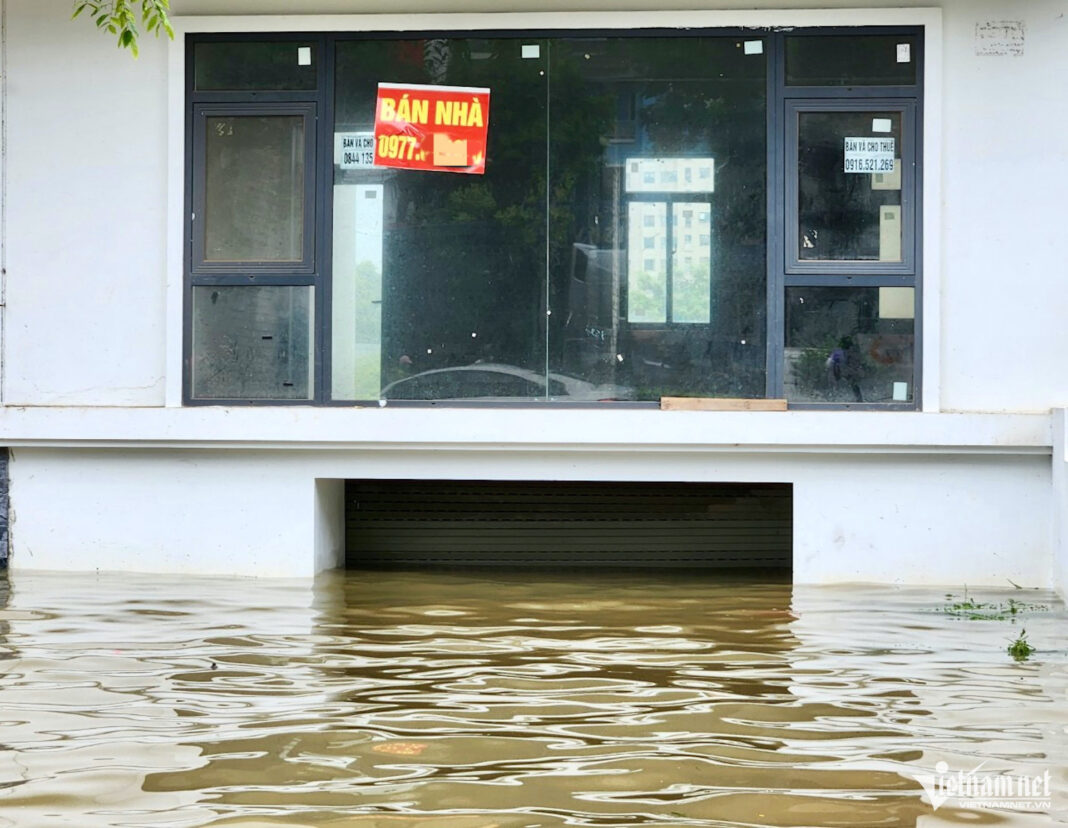Living in Hanoi, Vietnam, I’ve become all too familiar with the annual flooding that transforms the city’s streets and alleys into watery landscapes. Scrolling through social media and news websites, I often come across images of vehicles and residents struggling to navigate through these “urban oceans.” Some stories even recount near-drowning experiences in flooded mini-apartment basements, adding a touch of dark humor to the situation.
These tales of flooding prompted me to share my own home-buying experience and the lessons I’ve learned to avoid purchasing a property in a flood-prone area.
Five years ago, after successfully saving up over 5 billion VND from my business ventures, I embarked on a journey to buy my first home. I connected with multiple real estate agents and viewed over a dozen properties, but nothing seemed to match my expectations.
Just when I was starting to feel disheartened, I received a call from an agent who claimed to have found a “superb” property: a modestly sized house located in a quiet alley in the Cau Giay district of Hanoi, with clear legal documentation and a price that aligned perfectly with my budget.
Upon visiting the property, my first impression was indeed positive. The house, spanning over 40 square meters, was situated in a convenient and central location. The agent persistently urged me to make a quick decision, emphasizing the rarity of finding such an ideal home in the heart of the city at a reasonable price.
However, I chose to exercise patience and asked for more time to consider. In reality, I was quietly awaiting the arrival of a heavy downpour, knowing that Hanoi’s rainy season often reveals the true nature of the city’s infrastructure and prone-to-flooding areas.
A week later, influenced by an approaching storm, relentless rain poured throughout the day. Despite the agent’s reluctance and suggestion to reschedule, I insisted on visiting the property again, this time braving the rain on my own. As I approached the alley, I was met with a startling sight—the once dry passage had transformed into a flooded pathway.

Hanoi, Vietnam: Flooded streets during heavy rainfall. Image source: Hồng Khanh |
I parked my motorbike at the entrance and waded through the water. To my dismay, I noticed that the previously impeccable house was now inundated with water. The alley was filled with the pungent odor of sewage, and residents frantically attempted to block the water from entering their homes with makeshift barriers.
Witnessing this scene, I felt a sense of relief for having resisted the agent’s pressure and instead waited for this revealing “rain test.” Fast forward to the present, I now own three properties, and each time, I’ve diligently applied the same strategy of visiting prospective homes during heavy rainfall.
Some may consider this approach peculiar, but for me, it’s a practical way to assess the property and the surrounding roads for potential flooding issues. Purchasing a home in a flood-prone area not only impacts daily commutes and comfort but also poses risks of water damage, structural issues, and reduced building longevity.
Through my experiences, I’ve learned that it’s crucial to conduct thorough research and patiently await the right moment to assess a property’s true condition. During rainy days, issues such as water seepage, mold, and leaks become evident in residential buildings. In apartments, poor construction or inadequate window sealing can result in water infiltration.
If you’re still determined to purchase a property in a flood-prone area, you can negotiate a lower price. This way, you can acquire the home at a more reasonable cost, avoiding the pressure of rushed decisions and the potential regrets that may follow.
Don’t let urgent sales pitches and rare opportunities cloud your judgment. Take your time, and if possible, wait for the rain to reveal the true nature of your prospective home and its surroundings.
Mạnh Chiến

















